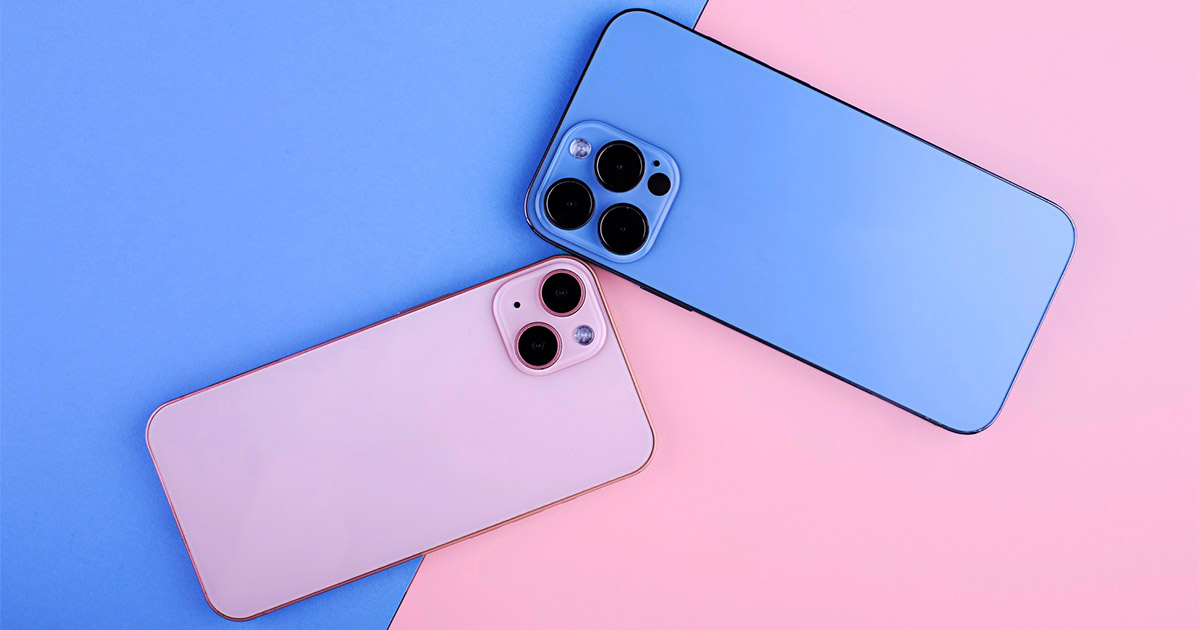How Nokia & Blackberry Failed

How Nokia & Blackberry Failed: The Danger of Ignoring Innovation
In this exploration of corporate shortsightedness, we'll examine how these industry giants missed the smartphone revolution despite having the resources and talent to lead it. Their story reveals how organizational culture, confirmation bias, and resistance to change can topple even the mightiest companies.
Their spectacular fall from market dominance offers crucial lessons for today's business leaders facing rapid technological change. By understanding these failures, you'll recognize the warning signs of innovation blindness in your own organization and discover strategies to stay ahead of disruptive technological shifts rather than becoming their victim.
The Fall of Giants: When Market Leaders Become Market Losers
Remember when having a Nokia phone was the ultimate status symbol? Or when executives wouldn't dream of using anything but their trusty BlackBerry? If you're having a conversation with someone under 25 today, they might look at you with genuine confusion. "Nokia made smartphones?" Yes, my friend. And they weren't just players in the market—they dominated it.
In 2007, Nokia commanded a staggering 49.4% of the global mobile phone market. BlackBerry (then called Research In Motion) was valued at $67 billion by 2008, controlling over 50% of the US smartphone market. Fast forward to today, and both are cautionary tales taught in business schools worldwide. What happened? In the simplest terms: they saw the future coming and chose to look away.
The Warning Signs They Ignored
The warning signs weren't subtle. When Steve Jobs unveiled the iPhone in 2007, most competitors dismissed it. BlackBerry co-CEO Jim Balsillie famously stated, "It's kind of one more entrant into an already very busy space with lots of choice for consumers." Nokia executives similarly downplayed the touchscreen revolution, believing their market position was unassailable.
By 2010, the writing was on the wall. Apple and Android devices were gaining momentum at an exponential rate. Yet both Nokia and BlackBerry doubled down on their existing strategies:
- Nokia clung to its Symbian operating system despite developer complaints about its complexity
- BlackBerry insisted physical keyboards were essential despite consumer enthusiasm for touchscreens
- Both companies maintained unwieldy organizational structures that slowed decision-making precisely when agility was needed most
As former Nokia CEO Stephen Elop later acknowledged in his famous "burning platform" memo: "We poured gasoline on our own burning platform."
The Culture of Denial: When Success Breeds Complacency
Success can be a dangerous drug. Once you've experienced it, maintaining the status quo becomes the safest route. This is what happened with both Nokia and BlackBerry—their prior success created organizational blind spots that eventually became fatal.
Nokia's engineering culture valued hardware perfection but undervalued software experience. By 2010, while Nokia phones could withstand incredible physical stress, their interface felt clunky compared to iOS and Android. The company's structure, with separate units competing for resources, meant innovative ideas often died in bureaucratic crossfire.
BlackBerry similarly suffered from what organizational psychologists call "active inertia"—the tendency of successful organizations to respond to major changes by accelerating activities that succeeded in the past. As touchscreens gained popularity, BlackBerry responded by making better physical keyboards.
The Human Cost of Resistance
Behind the corporate strategies were human fears and motivations. Engineers who had built careers specializing in Symbian or BlackBerry OS faced personal obsolescence if their companies pivoted. Middle managers who excelled in the existing system stood to lose influence in reorganization.
A former Nokia executive once shared: "We had the technology to build an iPhone-like device years before Apple. What we lacked wasn't technology—it was courage."
The timeline tells the story:
- 2007: iPhone launches; Nokia and BlackBerry stocks near all-time highs
- 2008-2010: Both companies reassure investors that touchscreen phones are "niche products"
- 2011: Nokia abandons Symbian for Windows Phone—too late
- 2013: BlackBerry finally launches a competitive touchscreen phone—years too late
- 2013-2014: Nokia's handset business sold to Microsoft; BlackBerry exits consumer hardware
By the time both companies acknowledged the new reality, they had lost their most valuable asset: market trust.
The Innovation Paradox: Why Market Leaders Often Miss the Next Wave
There's a paradox in business: the more successful you become, the harder it is to innovate. This isn't just about complacency—it's about structure.
Established companies optimize their operations around existing business models. When Nokia was dominating, its systems, incentives, and talent were all aligned around hardware manufacturing excellence. BlackBerry's operations centered on secure messaging and physical keyboards. Pivoting doesn't just mean changing strategy—it means rewiring an entire organizational nervous system.
Consider the numbers: In 2011, Nokia still spent $7.3 billion on Research and Development, more than Apple. But while Apple focused this spending on building the future, Nokia spent much of it maintaining the past. Innovation isn't just about how much you spend, but where you direct your resources.
Finding the Signal in the Noise
Not every technology trend deserves investment. For every iPhone-level disruption, dozens of promising technologies fade into obscurity. The challenge for established companies is distinguishing between passing fads and genuine paradigm shifts.
Samsung offers an instructive contrast to Nokia's failure. When Android emerged, Samsung—despite being a hardware manufacturer like Nokia—recognized the shift toward software ecosystems. Rather than building their own operating system, they embraced Android while differentiating through hardware design and features. By 2012, Samsung had surpassed Nokia as the world's largest phone manufacturer.
The difference? Samsung had developed organizational capabilities to:
- Objectively evaluate emerging technologies without defensive biases
- Quickly mobilize resources toward promising opportunities
- Partner effectively rather than building everything in-house
Most critically, Samsung maintained what innovation experts call "absorptive capacity"—the ability to recognize valuable external information, assimilate it, and apply it commercially.
Building Future-Proof Organizations: Learning from History's Mistakes
Today's business landscape moves even faster than it did during Nokia and BlackBerry's decline. What are forward-thinking organizations doing differently?
Successful companies have implemented systematic approaches to trend-spotting and adaptation:
- Cross-functional innovation teams that operate outside traditional reporting structures
- Regular "future-back" strategic planning (imagining various futures and working backward)
- Leadership incentives tied to both current performance and innovation metrics
- Strategic partnerships that provide windows into emerging technologies
The companies thriving in today's technological landscape—from Microsoft's cloud transformation to Adobe's pivot to subscription services—share a common trait: they're willing to cannibalize their own successful products before competitors do it for them.
The Partnership Advantage
Even the most vigilant organizations can develop blind spots. This is where external partnerships provide critical advantages.
External technology partners bring:
- Unbiased assessments of current capabilities versus market direction
- Specialized expertise that would be impractical to maintain in-house
- Implementation capabilities that can accelerate adaptation
- Cross-industry insights that internal teams might miss
Consider how modern Automation & AI adoption is unfolding: Companies partnering with specialized technology consultancies are implementing Automation & AI solutions in months rather than years, gaining competitive advantages while reducing implementation risks.
At Exclusive Tech, we've seen firsthand how external partnership accelerates adaptation. Our clients typically implement new technologies 40% faster than companies relying solely on internal resources—not because we're smarter, but because we're not constrained by "this is how we've always done it" thinking.
Embracing Today's Transformative Trends
The Nokia and BlackBerry stories aren't ancient history—they're recent warnings. Today's AI and automation revolutions represent similar inflection points. Companies that view these as optional technologies or distant concerns risk repeating the same mistakes.
Automation isn't just about cost-cutting—it's about freeing human potential for higher-value activities. AI isn't just a technology trend—it's a fundamental shift in how organizations can process information and deliver value. The businesses pulling ahead today are asking the right questions: Not "Should we adopt AI?" but "How can we implement AI most effectively to enhance our core strengths?" Not "Can we afford automation?" but "Can we afford not to automate?"
As we reflect on the Nokia and BlackBerry stories, the lesson is clear: The greatest danger isn't in embracing new technology too enthusiastically—it's in recognizing its importance too late. The technology landscape will continue evolving. The questions is: Will your organization evolve with it, or become the next cautionary tale in a future blog post? Let's have that conversation about your technology future before it becomes a discussion about your technology past.
Book Free Business Consultation with Exclusive Tech
Are you wondering how your business can effectively and efficiently adopt Automation & AI before your competitors gain competitive advantage? Book free Business Consultation with Exclusive Tech today, and get comprehensive insights with actionable plan








